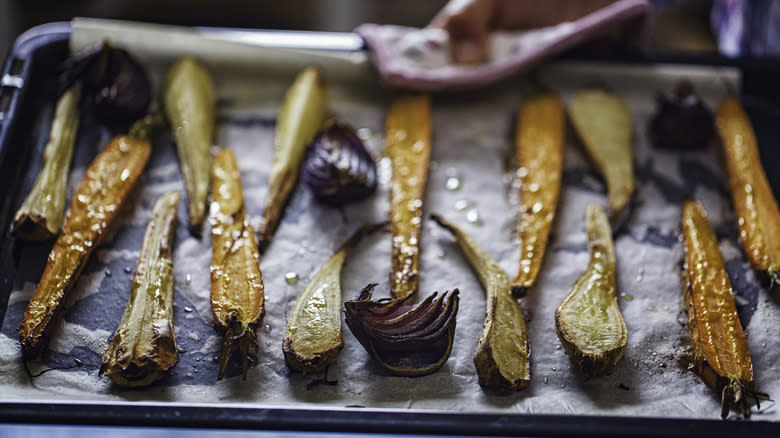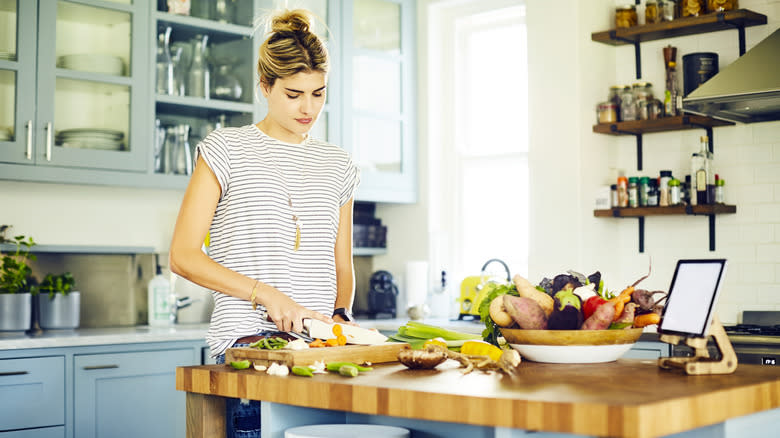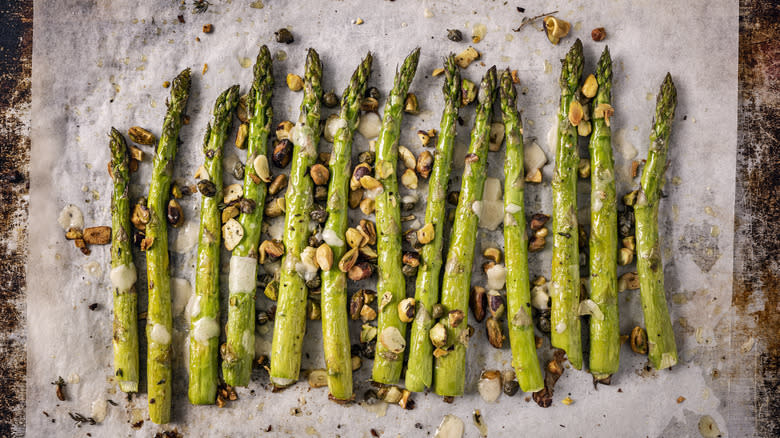The Simple Prep Mistake That Makes Roasted Vegetables Soggy

Roasted vegetables are the perfect side dish -- nutritious, hearty, and full of flavor. Additionally, the best roasted vegetables have a toothsome texture with just the right amount of char, so a soggy outcome is never ideal. While you can achieve perfectly crispy roasted vegetables with a single key ingredient, how the veggies go into the oven is another crucial concern when it comes to texture. When placing vegetables on your baking sheet, always avoid crowding the cookware.
Veggies should comprise a single layer when roasting or the moisture released during the baking process will steam them. Steam means a mushy, soft texture, and prevents carrots, onions, and potatoes from properly caramelizing. If you want to be meticulous about your roasting process, it's recommended that there's a minimum ¼ inch between each vegetable. To achieve this distance, it might be necessary to use two or more baking pans, depending on how many vegetables you're roasting at one time. And because many ovens have hot spots, be sure to rotate the baking sheets halfway through for even doneness.
Read more: 8 Baking Sheet Mistakes You Want To Avoid
Cutting Techniques And Materials Also Matter

Unless you're trying for the best baked potato, cutting vegetables into smaller pieces prior to roasting is optimal. You also want to make sure that each piece is roughly the same size, or you could run into issues with uneven cooking. If veggies are cut into different sizes, smaller pieces will finish baking quickly, while larger pieces will take longer. In this case, the smaller pieces may wind up burnt.
It's equally important to select your cookware wisely when roasting veggies in the oven. Pans with higher sides may trap the moisture coming from your veggies and prevent it from escaping. Like overcrowding, high pan sides can also lead to an unwanted steaming effect. Metal pans are also a better option than glass when roasting, as metal gets hotter quicker. Also, remember that roasting vegetables on parchment paper is a huge mistake when it comes to browning.
How Long Should You Roast Different Vegetables?

Even if you're diligent about cutting vegetables into uniform sizes and not crowding your cookware, you may still be foiled by cooking times for different vegetables when aiming for a perfect roast. To this end, it may be necessary to add your cut vegetables to the oven at different times to ensure they're beautifully cooked. For instance, zucchinis or bell peppers tend to be pretty soft, so these veggies may be done in as few as ten minutes. On the other hand, an onion may need up to an hour before it achieves the right texture.
As for other selections, doneness can vary according to the heartiness of the vegetables. Consider that carrots can take about 20 minutes to roast, while delicate sugar peas will be ready in eight minutes. Additionally, there is a default oven temperature to use when roasting vegetables to achieve the best possible texture and doneness, regardless of what you're making. These tips can help you avoid mushy side dishes and ensure your roasted veggies don't get overshadowed by the main course.
Read the original article on The Daily Meal.


